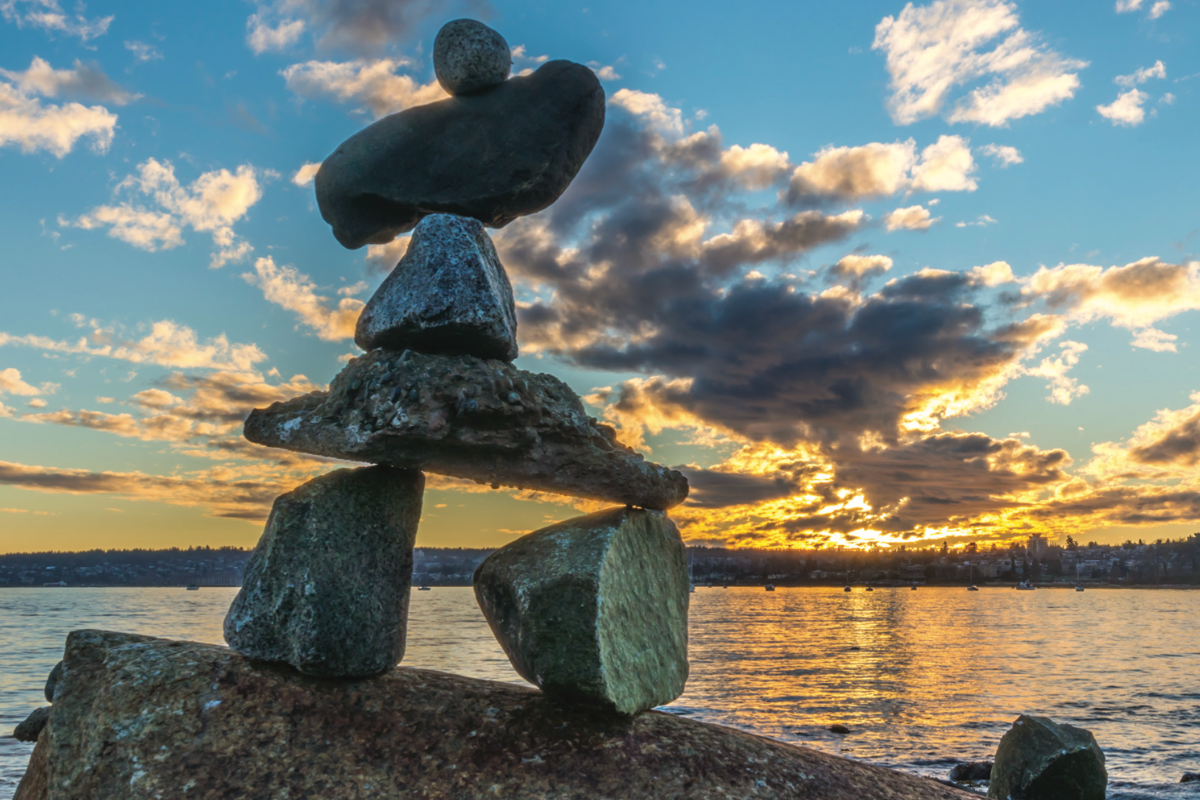You’ve definitely seen them on the side of the road while driving up to Muskoka, or maybe remember that Heritage Minute episode where a RCMP officer watches a family of Inuit build one. They’ve become a very popular Canadian cultural symbol, especially the Great Canadian North. Historically, they were found throughout Northern Canada, Greenland and Alaska, but have become more prevalent everywhere. These man made structures have been used for various things, but most notably for landmarking and navigation. They serve as markers for things such has fishing routes, hunting grounds or travel routes. For an Inuit coming across an Inuksuk, there ia a huge amount of information that can be displayed. These often large structures would require a community of people to build, due to their large size and heavy rocks.
The word Inuksuk translates to “that which acts in the capacity of a human”. The Inuksuk is an important part of Inuit culture and it can be seen on the flag and coat of arms of the Canadian territory Nunavut.
They are made from different shapes and sizes of stones and boulders, and although people tend to only know the term “Inuksuk” there are actually several different types of them, and they all have different purposes and meanings. Inuksuit is the plural form of inuksuk.
An inunnguag is the stone sculpture that most closely resembles a human figure and the one most people are familiar with. It has a head, body, legs and arms.
An inuksuk made of only boulders is referred to as a inuksummark or a inuksukjuag and because of their height, were used most often as directional aids as they could be seen from a distance.
A pirujuqarvik is used to mark where meat is stored.
Tupjakangaut points to a good hiking spot.
Nikisuittuq points to the North Star to aid in navigation.
The niugvaliruluit frames a window to a distant point.
A nalvnaikkutaq is made of one single stone, placed upright on it’s end.
Tikkuuti are rocks of different shapes and sizes that can be pointed in various directions. They are usually laid down flat on the ground.
Niagara has a couple of Inuksuk you can go see. One is at St. John’s United Church in Stevensville. The church itself sits on a site where people have been worshipping for almost 200 years. The Inunnguag sits right outside the front of the church.
You can also find one near city hall in the City of Niagara Falls. It marks the Northern end of the Olympic Torch Run Legacy Trail, a trail connecting Clifton Hill and Downtown Niagara Falls.
Art in the Open (artintheopen.ca) is a website that celebrates outdoor art in Niagara. Check it out to get a full listing of where you can see various art pieces throughout Niagara.





